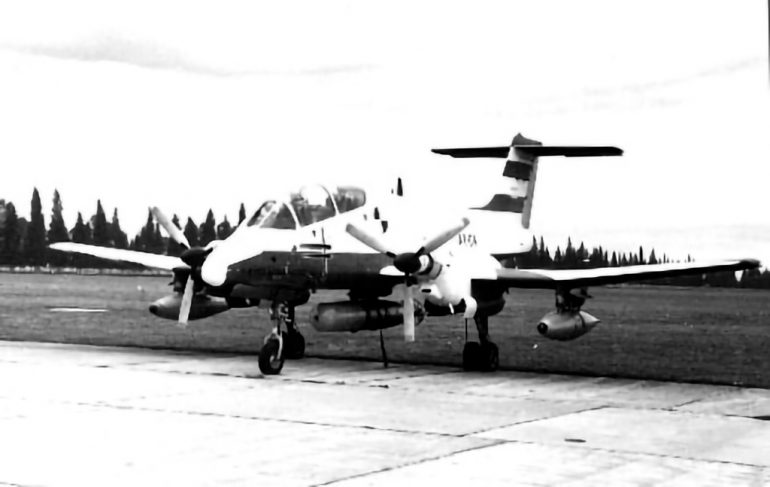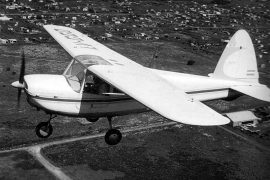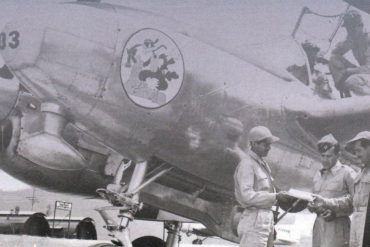The South Atlantic conflict caused the Argentine armed forces to face not only a world power when it comes to military might, but also their own internal limitations and failures in warfare.
Not only the maritime might, but the certain threat posed by the british submarines was evidenced with the sinking of the cruiser ARA “General Belgrano” on 2 May, 1982, and for this reason, the Argentine Navy and Air Force sought to implement solutions to counteract this troublesome situation.
Despite the controversial decision to withdraw the ships from the fleet to safer waters, the Naval Aviation explored, besides their attack operations to naval targets, many options to protect the fleet from attacks coming from enemy ships and submarines, and part of the success of these options was due precisely to the withdrawal of the fleet to shallow waters.
On the other hand, the Air Force, despite having had little experience in attack operations against naval formations, began evaluating the possibility of adapting aircraft for that type of mission as well as developing tactics specifically aimed to that end, in an attempt to increase its offensive capabilities.
By the middle of May, 1982 the Strategic Air Command of the Air Force decided to undertake a series of test flights, with the purpose of enabling the IA-58 Pucará to carry and launch torpedos effectively.
The weapon chosen would be the U.S. built Mk.13 torpedo, which by then had almost been withdrawn from use by the Argentine Navy. Built between the years 1943 – 1945, it was a sturdy weapon, having been designed to be launched from boats and aircraft. The Argentine Navy employed them for many years, usually launching them from Consolidated PBY-5A Catalinas, with the launching speed being 90 knots. While not being a modern weapon, the large number of examples remaining in the inventory led to its selection.
The then Comodoro Jorge S. Raimondi was placed in charge of the project, to be conducted at the Naval Base of Puerto Belgrano, in order to have the cooperation of the Navy, which quickly supplied enough torpedoes. These projectiles had brackets installed in order to mount them in the airplane’s Aero 20A-1 ventral bomb rack. Also, after a long time of inactivity, the torpedoes’ mechanisms and systems required a thorough revision.
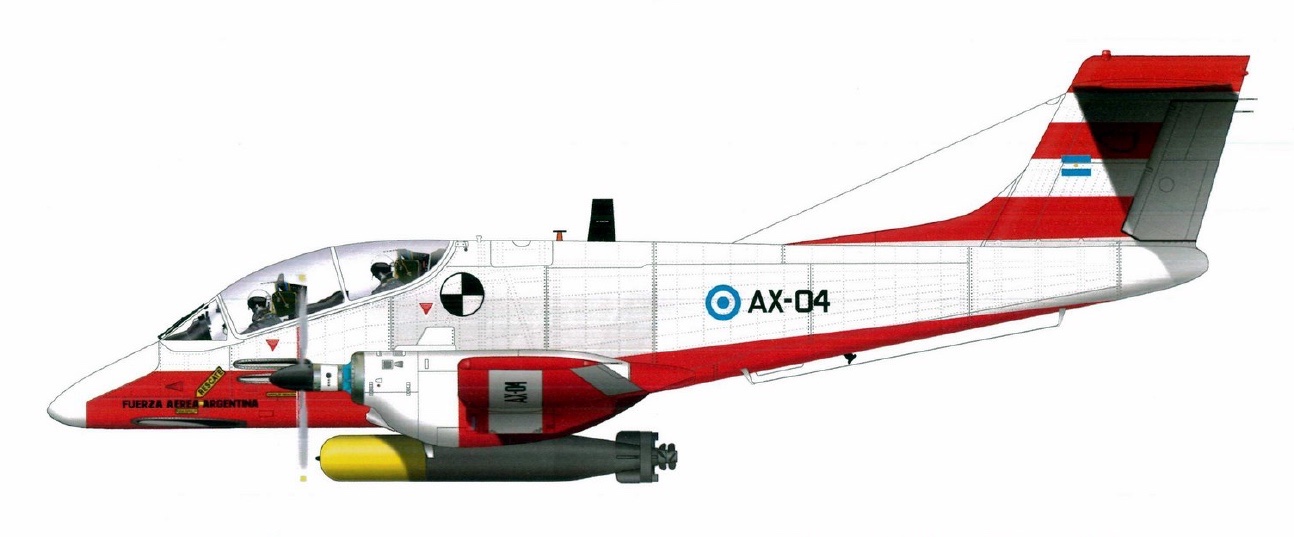
On 21 May, the Pucará serialed AX-04 landed at the Comandante Espora air base, with Capt. Rogelio R. Marzialetti and Supervisor Mario A. Loyácono on board, both members of the Centro de Ensayos en Vuelo (Flight Testing Center) at the Area Material Córdoba, were the airplane was also assigned.
This specific aircraft was a standard series unit (formerly serialed A-509) that had been modified after leaving the assembly line, to be employed as prototype for the evaluation of different weapons and systems; However, for this particular project, a film camera was installed in such a way that it could capture the moment when the torpedo was launched.
The first launch of a Mk.13, took place on 22 May, the torpedo used being a practice round, not equipped with an explosive head. The launch zone established by the Navy was located 40 miles from Puerto Belgrano, and was the same location where -later that same day- the second test launch was conducted.
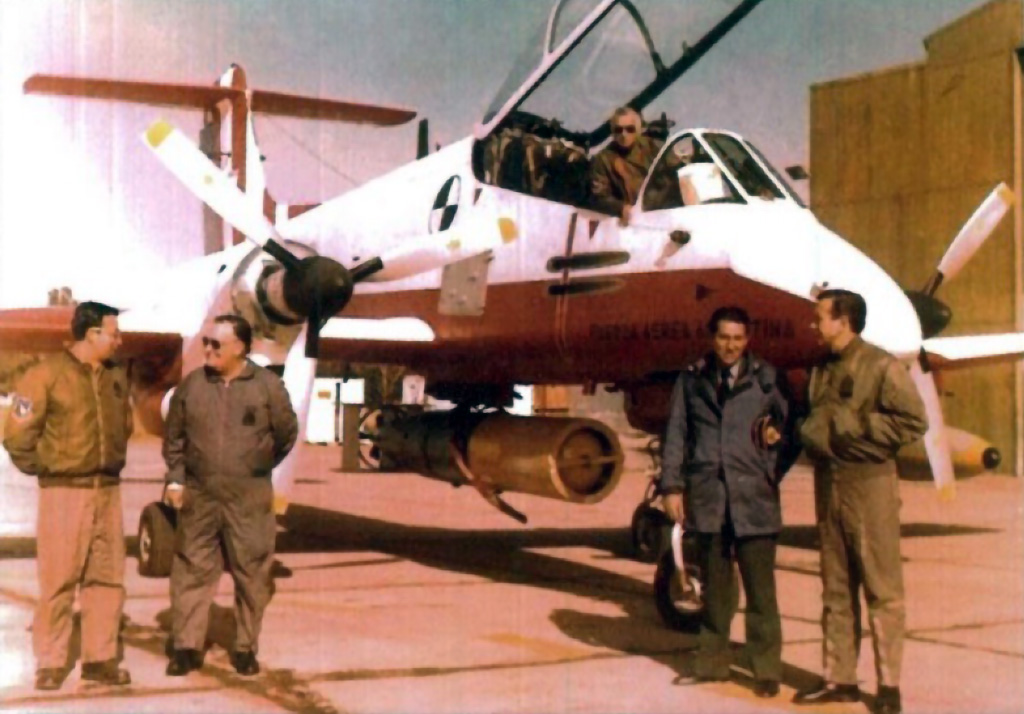
These two launches were made with the aircraft in a 20-degree dive at 300 knots and at an altitude of approximately 330 feet, with both resulting in the destruction of the torpedo when it impacted the water. The same happened the following day, when two more launches were made in a 45-degree dive at 250 knots and 650 feet. It was more than evident that there was something missing for the torpedo to be effectively deployed from an airplane with the performance of the Pucará.
Lacking the torpedo’s operational manuals, the only information available was that it should enter the water at an angle of approximately 20 degrees. With a less acute angle, the torpedo would bounce, thus damaging the internal and propulsion mechanisms. If the angle was greater, then there existed the risk that it would spike itself on the bottom of the sea.
After endless consultations with retired sub-officers who had been assigned to the Navy’s torpedo shops, it was decided to mount an aero-dynamic brake on the nose of the Mk.13, and a biplane stabilizer in the tail end. Both components would separate from the torpedo once the projectile hit the water.
After the modifications were introduced, the first successful launches took place on 24 May, off Trelew, in the San José Gulf. These launches were conducted with the airplane in a straight and level attitude, at no more than 30 feet and at 200 knots, since at higher speeds the torpedo would impact the bottom of the sea. In total, 7 practice runs were conducted.
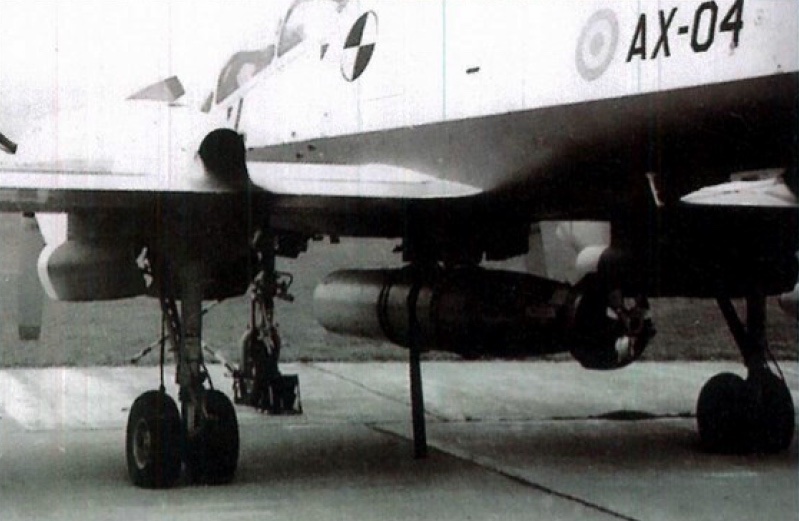
On June 10, the first launch with a torpedo with an explosive head was conducted. This occurred on a zone with deeper waters and near cliffs, North of the Port of Santa Cruz. The depth in that location, however, was not enough to compensate for the speed of 250 knots developed by the Pucará A–566, which by then had replaced AX-04.
A last attempt was conducted on 14 June, in the waters off Pingüino Island, near Puerto Deseado. Such location had been selected due to its depth and rugged shoreline. By then, the optimal speed had been determined to be 200 knots while on a straight and level attitude. However, while the preparations for the flight were being conducted, the entire project was cancelled due to the surrender of the Argentine troops that were fighting in the Malvinas Islands (Falklands.)
It is worth mentioning that while this project was being undertaken, studies were also conducted regarding the deployment of Mk.12 anti-ship mines from a Pucará, in an attempt to mine the San Carlos Straits, in the Malvinas / Falklands. This project did not go beyond loading the airplane with the mines.
While these projects were being conducted, the Air Force deployed a section of Pucarás of the Grupo 3 de Ataque (Group 3 Attack) to the airport of La Plata, near Buenos Aires, which upon arrival began conducting patrol missions over the approaches of the Río de La Plata, just in case the British submarines decided to enter the area. During one of those patrolling missions the Pucará A-526 crashed near Atalaya, in Buenos Aires, on 9 June, 1982.
The end of the South Atlantic conflict marked the end of the evaluation of the Pucará as a torpedo bomber or as platform for other weapon systems for use against naval targets. In the case of the airplanes involved in the projects, all of them were returned to their respective units. The following is the individual information of both aircraft:
FMA IA-58A C/N 009, serial AX-04
Accepted by FMA on 05-MAY-77 as A-509. Assigned to the CEV on 19-SEP-77; reserialed as AX-04 in OCT-77. Used for all kinds of testing, among them several related to the development of the IA-63 Pampa. The 1050 hours inspection, which started in 1986, was not completed. Withdrawn from use and stored in Córdoba, and then mounted on a pole for display at Río Tercero with the fictitious registration A-537.
FMA IA-58A C/N 067, serial A-566
Accepted by FMA on 17-NOV-81. Assigned to the CEV on 07-MAY-82 Used for some testings before being deployed to the Escuadrón IV de Ataque (Squadron IV Attack), as a single seater. Then transferred Grupo 3 de Ataque of the III Brigada (III Brigade.) Mounted on a pole at Comodoro Rivadavia.
Technical Data – Mk.13 Torpedo
Range: 3.10 miles
Speed: 30 knots
Ready to launch weight: 970 kg.
Trotyl explosive charge: 272 kg.
Length: 13.5 ft.
Diameter: 22.4 inches
Directional control: gyroscope
Maximum depth: 50 ft.
Propulsion: 2 counter rotating propellers, driven by a 103cv turbine
Propulsion method: Compressed air, heated by an alcohol burning heater

